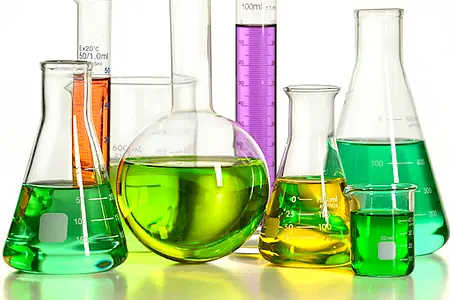Organic solvents are versatile compounds that have revolutionized modern industry and research. From dissolving essential oils to extracting pharmaceutical compounds, organic solvents have become a crucial part of various applications.
The unique properties of organic solvents make them an ideal choice for solubilizing many different types of molecules, ranging from small organic molecules to large biomolecules like proteins and nucleic acids.
In this article, we will delve into the world of organic solvents, explore their properties, types, applications, and faq.
Introduction
Organic solvents are carbon-based compounds that are used to dissolve, dilute, or extract other substances.
Some examples of organic solvents are acetone, ethanol, methanol, toluene, xylene, and chloroform.
Organic solvents can be either synthetic or naturally occurring.
Synthetic organic solvents are chemically synthesized in a laboratory or industrial setting, using various chemical reactions and processes. Examples of synthetic organic solvents include acetone, methanol, and toluene.
On the other hand, naturally occurring organic solvents are found in nature and can be extracted from plants or other natural sources. Examples of naturally occurring organic solvents include ethanol, which is found in alcoholic beverages, and limonene, which is found in citrus fruits.
| Table of Contents |
| ● Introduction
● Example of Organic Solvent ● Types of organic solvent ● Properties of Organic Solvents ● Applications of Organic Solvents ● FAQ |
Example of organic solvent
Consider the example of aliphatic solvent hexane having six carbon atoms present in the organic solvent.
Types of organic solvent
Organic solvents can also be classified into different categories based on their chemical structure and functional groups.
The three primary types of organic solvents are aliphatic, aromatic, and carbonyl solvents.
- Aliphatic solvents:These are organic solvents that are composed of straight or branched chains of carbon atoms. They are generally less polar and less toxic than other types of solvents. Examples of aliphatic solvents include hexane, heptane, and octane.
- Aromatic solvents:These are organic solvents that contain an aromatic ring in their structure. They are generally more polar than aliphatic solvents and are often used for dissolving polar compounds. Examples of aromatic solvents include benzene, toluene, and xylene.
- Carbonyl solvents: These are organic solvents that contain a carbonyl functional group (-C=O) in their structure. They are typically polar solvents and are often used as reaction solvents or as solvents for polar compounds. Examples of carbonyl solvents include acetone, acetonitrile, and dimethylformamide (DMF).
Properties of Organic Solvents
- Volatility: Organic solvents are volatile and can easily evaporate due to their low boiling point and high vapor pressure. This property makes them useful in applications where rapid drying or evaporation is required.
- Solubility: They can dissolve other organic materials, such as oils, resins, and polymers, due to their polarity or nonpolarity. The solubility of a solvent depends on its chemical structure and the nature of the material it is intended to dissolve.
- Polarity: These can be polar or nonpolar, which affects their solubility and ability to dissolve certain types of materials. Polar solvents have a positive and negative charge separation, while nonpolar solvents do not have any separation of charges.
- Conductivity: Some organic solvents have the ability to conduct electricity due to the presence of ions in the solution. This property is useful in electroplating and other electrochemical processes.
- Density: They have different densities, which can affect their ability to mix with other substances. Heavier solvents tend to settle at the bottom of a solution, while lighter solvents tend to rise to the top.
- Viscosity: They have varying degrees of viscosity, which can affect their flow properties and handling characteristics. High-viscosity solvents are thicker and more difficult to handle, while low-viscosity solvents are more fluid and easier to handle.
Applications of Organic Solvents
- Organic solvents are commonly used for the extraction of natural products, such as essential oils and plant extracts.
- They are used as reaction solvents in various chemical reactions, including polymerization, esterification, and condensation reactions. They can also be used as solvents for catalysts or reagents.
- These are used as cleaning agents for various surfaces, including metal, glass, and plastics.
- They are used for coatings and paints, enabling them to be applied easily and evenly. They also help in the evaporation of volatile components during the drying process.
- They are used in the manufacture of pharmaceuticals as reaction solvents, crystallization solvents, and as solvents for drug delivery systems.
FAQ
Q1.What are organic solvents?
Ans. Organic solvents are carbon-based compounds that are used to dissolve, dilute, or extract other substances.
Q2.What are the most common organic solvents?
Ans. Some of the most commonly used organic solvents include acetone, ethanol, methanol, toluene, xylene, and chloroform.
Q3.How are organic solvents classified?
Ans. Organic solvents can be classified based on their chemical structure, such as aliphatic, aromatic, and carbonyl solvents, or based on their polarity, such as polar and nonpolar solvents.
Q4.Are organic solvents safe?
Ans. Organic solvents can be hazardous and toxic, and proper handling and disposal practices are essential to avoid environmental and health risks. It is important to follow safety guidelines and use appropriate protective equipment when handling organic solvents.
Q5.Can organic solvents be recycled or reused?
Ans. In some cases, organic solvents can be recycled or reused to reduce waste and costs. However, this requires careful consideration of the properties and purity of the solvent and appropriate recycling methods.
